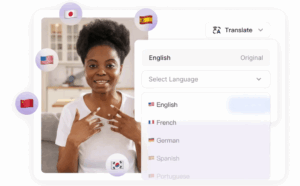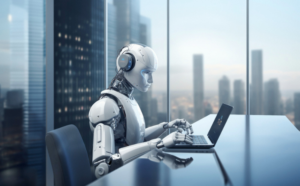Education tech is one of the most promising areas for an AI revolution because artificial intelligence is becoming more common in our daily lives. AI in education promises personalized learning, early intervention, administrative efficiency and many other benefits hence poised for transformation unlike ever before. However, while we could be on the verge of an era where AI delivers a remedy to all problems in the education sector, it is important that we tread carefully by addressing any shortfalls that could come with its use as a tool for educational purposes.
Table of Contents
Understanding the Basics: What Is AI in Education Tech?
For us to understand the potential drawbacks let us first have an overview of what it means when we refer to edtech as being artificial intelligence based. Artificial Intelligence is a vast branch of computer science focused on creating intelligent machines which can learn from experience thus adapting to new information sources and performing human-like tasks.

In education context, AI ranges from simple automation tasks to complex systems that adapt to learners’ needs. These tools aim at making learning more accessible, engaging and effective often through algorithms, big data or machine learning.
Learn more: 10 Best AI Tools For Education
The Marvels of AI in Educational Settings
AI has a lot of advantages when applied in education. These wonders involve personalizing learning paths among others such as collaborative interactive platforms and administrative aids like admissions screening and records management.
Personalized learning epitomizes modern pedagogy’s holy grail besides being one of the most exciting applications for AI within ed tech platforms. For instance, software driven by machine-learning algorithms allows individual adaptation thereby facilitating unique educational journeys for each student. Such customization can greatly enhance student engagement levels improve their understanding and eventually lead them into higher educational achievements.
Collaborative and interactive platforms also facilitate classroom experience improvement while promoting 21st-century competences development. For example tutoring systems driven by artificial intelligence give students further support outside the classroom thus providing more resources and guidance specific to their learning pathways.
Administratively, AI tools may help with many repetitive tasks which educators are overburdened with. This efficiency means that there is more time for strategic planning, interacting with students or refining teaching techniques.
The Learning Curve: Recognizing AI’s Educational Hurdles
However, despite its immense potential in education, AI does come with a number of challenges. The most significant among these hurdles include ethical considerations privacy concerns and risks related to biases being entrenched within AI systems themselves.
Ethical dilemmas arise from the black box algorithms governing artificial intelligence tools as well as their potential effect on students’ educational progressions. It is important for educational AI systems to be transparent while data derived from them should be used responsibly.
Privacy poses a serious problem especially when it comes to sensitive personal and educational data being shared or stored online. Cases of data breaches have been recorded before and they can be extremely expensive. Schools and edtech firms are under mounting pressure to secure student information.
Furthermore, AI systems have an inherent risk of bias which can inadvertently exacerbate existing inequalities. The ability of AI tools to deliver is only as good as the data it is trained with, if that data is biased then so is the resulting system. Consequently, these biases may lead to unfair practices such as tracking and segregation in school admissions thereby worsening some of the issues that AI is thought to resolve.
Teachers vs. Tech: Striking the Right Balance
Another pressing issue at hand is the possible displacement of teachers by technology. Although AI can be employed for support and improve human education, among other risks there are chances that it will be employed to cut costs leading to a weaker holistic educational experience. Instead of undermining the teacher’s role, AI should go along with human instructors in order to establish perfect learning environments.

As educational settings incorporate more AI tools, educators need continual professional development so that they become well conversant with technology and learn how best it can be used.
Learn more: 6 Best AI Tools For Teachers
The Irreducible Human Element in Education
An important constraint on edtech’s application of artificial intelligence (AI) is its inability to fully replicate human touch within education itself. While this makes it possible for AI to personalize learning and provide support when needed, it lacks emotional intelligence or creativity. Education implies not transmitting information but instead sparking curiosity, critical thinking skills, and social-emotional competencies – all requiring a human touch.
Moreover, employing AI might restrict creativity and maverick thinking in education since students may be gently guided down predetermined paths which are deemed suitable by AI machines. This one-size-fits-all approach even when personalized may detract from innovative out-of-the-box thinking required for driving innovation.
Learn more: How Can AI Tools Enhance The Learning Experience In Education
The Need for Ethical and Regulatory Frameworks
Given these potential difficulties associated with these technologies, strong ethical and regulatory frameworks must be put up in place. These concerns should touch on transparency of AI systems; security of student’s records as well as mitigation against biases. Besides, it is important to have a common policy around the globe as far as AI tools are concerned.
Educators, parents and students must contribute to the development of these frameworks in order for them to harmonize with our educational institutions’ shared values.
The Balancing Act: Leveraging AI’s Strengths While Mitigating Its Risks
The journey of AI in education is a high wire act, balancing the benefits with its limitations. Education can be transformed by AI tools but they cannot become a panacea. We have to be careful, aware of the risks and ethical concerns as well as preserving those human dimensions which make education priceless.
To maximize on AI in education, stakeholders must engage in meaningful talks, come up with clear policies and continuously monitor how these technologies are used or affect them. After all, education is not about algorithms but it is about equipping individuals with knowledge and skills to thrive amidst changes. Here is where AI can be best utilized – as an educator’s ally rather than substitute.
Conclusion
However, it must not overshadow or minimize the importance of human connections within classrooms because AI has great potential to revolutionize education through innovative solutions tailored towards each learner; hence posing a serious threat education system development. This will enable us maintain teacher-student relationships while harnessing technology advancements for improved learning processes by considering ethical aspects discussed above concerning shortfalls.
FAQS
What are the main challenges of implementation AI tools in education?
The primary issues are data privacy, integrating AI with current educational systems, training teachers to use AI effectively, and addressing the digital divide which may hinder some students from accessing AI tools.
How does data privacy affect AI use in education?
AI tools require access to extensive student data in order to function effectively. The protection and ethical use of this information is a significant concern because misuse can lead to violations of privacy.
Are all students able to access the same learning opportunities using AI tools?
No; digital divide exists whereby some students especially those from low income or rural areas may not have access to technology or internet connections that allow effective usage of these tools.
How does diversity learning needs addressed by Ai tool?
However, without proper customization and oversight, they might fail to fully cater for all learning styles and disabilities yet accommodating each student’s individual needs by adopting content pacing is possible through artificial intelligence (AI) system.
What would be the dangers of depending too much on AI educationally?
It can result in lack of critical thinking as well as problem solving skills among learners because they only rely on it for answers while also reducing human interaction essential for developing social and emotional skills.




